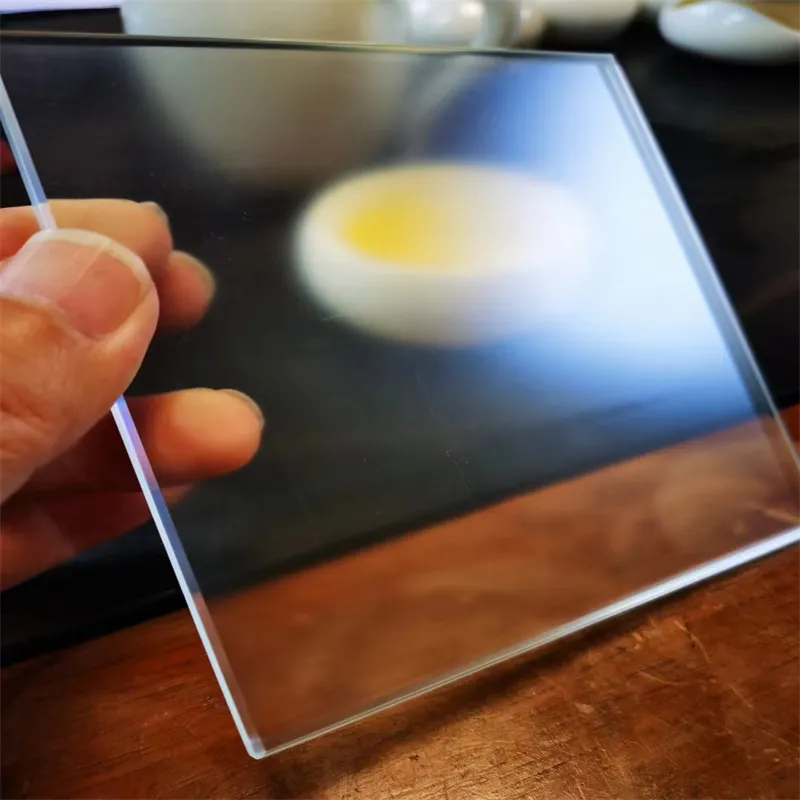Nov . 15, 2024 12:10 Back to list
clear glass low iron
The Benefits and Applications of Clear Glass with Low Iron Content
Clear glass has long been a staple in architecture, art, and various industries. Among the different types of glass available, clear glass with low iron content has emerged as an exceptional choice for those seeking both aesthetics and functionality. This article delves into the benefits, applications, and reasons why low iron clear glass is becoming increasingly popular in modern design and construction.
Understanding Low Iron Clear Glass
Standard clear glass typically contains iron oxide, which imparts a greenish tint due to the impurities present in the raw materials used for glass production. In contrast, low iron glass is made using more refined raw materials and sophisticated manufacturing processes that significantly reduce the iron content. The result is a glass that possesses a remarkably high level of clarity, allowing for the natural transmission of light without the distortion caused by impurities. As a result, low iron clear glass often appears crystal clear, providing an unobstructed view of what lies beyond.
Aesthetic Appeal
One of the most compelling reasons for using low iron clear glass in design is its aesthetic appeal. The colorless nature of this glass enables architects and designers to create spaces that feel bright and airy. It allows natural light to flood into interiors, which enhances the overall ambiance while reducing the need for artificial lighting. This characteristic makes low iron clear glass an ideal choice for applications such as large windows, facades, and skylights in both residential and commercial buildings. A building clad in low iron glass not only looks sleek and modern but also creates an inviting atmosphere for occupants and visitors alike.
Optics and Visibility
Low iron clear glass is not just about looks—it also provides superior optical qualities. Its high level of clarity ensures that colors appear more vibrant, making it an excellent choice for display cases, retail environments, and museums. When utilized in these contexts, transparent barriers allow customers to fully appreciate products and art without distortion or color alteration. This degree of transparency also benefits aquariums and other displays where the viewer's experience should be as natural and unobstructed as possible.
clear glass low iron

Energy Efficiency
Besides its aesthetic and optical advantages, low iron clear glass plays a significant role in energy efficiency. The material itself can be treated with various coatings to enhance its thermal insulation properties. In commercial and residential applications, this glass can contribute to energy savings by reducing the reliance on heating and cooling systems. By allowing more natural light to penetrate interiors, low iron glass helps maintain comfortable indoor temperatures and decreases the energy required for lighting during the day. As more people become conscious of energy consumption and sustainability, the demand for such energy-efficient solutions continues to rise.
Durability and Maintenance
When it comes to durability, low iron clear glass does not disappoint. It can be produced in a variety of thicknesses, making it suitable for a range of applications, from windows and doors to elegant glass railings. Additionally, its surface can be treated to be more resistant to scratches and stains, prolonging its appeal and functionality over time. This durability translates into lower maintenance costs, making it a practical choice for both residential and commercial properties.
Sustainable Design
Finally, the use of low iron clear glass aligns well with contemporary sustainable design principles. As the construction industry increasingly embraces biodegradable and recycled materials, using low iron glass, which can be fully recycled at the end of its life cycle, becomes an environmentally friendly choice. Furthermore, promoting natural light within a building reduces the overall carbon footprint related to energy consumption.
Conclusion
In summary, clear glass with low iron content combines aesthetic beauty with practical advantages, making it a vital material in modern architecture and design. Its superior clarity, enhanced optical qualities, energy efficiency, and durability make it a popular choice among architects and builders. As sustainability becomes a key focus in construction practices, the importance of low iron clear glass is poised to grow even further. Whether used in residential homes or commercial spaces, low iron clear glass is undoubtedly an asset that enhances both the visual landscape and functionality of our built environment.
-
Safety and Style with Premium Laminated Glass Solutions
NewsJun.24,2025
-
Reinvents Security with Premium Wired Glass
NewsJun.24,2025
-
Premium Float Glass Line for Modern Architecture
NewsJun.24,2025
-
Low Emissivity Glass for Energy-Efficient Architecture
NewsJun.24,2025
-
High-Performance Insulated Glass Solutions for Modern Architecture
NewsJun.24,2025
-
Elevates Interior Style with Premium Silver Mirror
NewsJun.24,2025
Related PRODUCTS














